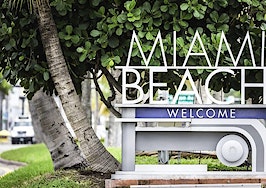- Miami in 2030 will be home to a variety of high rises, new developments, and creative retrofits.
- Many people who seek a new address in Miami were born outside the US.
- New, luxury residences in the Miami area will not come cheaply.
With all the building going on in Miami at present, it’s likely that the skyline will be impacted visually by projects large and small. And that new neighbors will likely be fluent in a variety of languages.
The plethora of projects on the books, and studies that show that South Florida is a hot destination for foreign property-seekers, goes to show that people know a good thing– when they see other people with it.
Just last month, a Chinese partnership bought up a rare sliver of beachfront property in Miami Beach, seeking to place either a luxury hotel or apartments there. The partnership paid more than $38 million for the parcel, after the developer who owned it wanted out of the Miami market.
And, the Ritz-Carlton Residences Miami Beach, (not owned by the hotel company) is basically a creative retrofit that is reclaiming what used to be the Miami Heart Institute. The design vision, according to the property’s website seeks to strike a tone of “elegant simplicity.” The result will be 111 units that start at $2 million, and ascend toward $40 million.
Creative redevelopments like this one are taking off across the lower third of The Sunshine State. The old U.S. Immigration Naturalization Service on Biscayne Boulevard and the River Landing project, a redevelopment of the old Mahi Shrine Auditorium on the Miami River near the Health District are two such reclamation projects of notable addresses.
While regulations and zoning are limiting the sizes and heights of new construction in South Florida, there is a lot going on in downtown Miami and Brickell that will reach for the tropical skies. And, the price points for those towers will approach those asked by the Ritz.
Creative agency Visualhouse decided that the future skyline of Miami was worth some of their creative effort. They crafted their vision of what Miami will look like in 15 years.
Their project also juxtaposed this new Miami with Miami of the past – with a skyline dominated by the other types of building that what developers seek to reclaim.

Visualhouse is a creative agency focused on creating compelling brand stories for architecture, design and the built environment.
The Miami markets rebounded first, cleared inventory and remain the hottest in the state, with Ft. Lauderdale not too far behind and coming into its own as a sought-after spot for international buyers. Estimates are that more than 200 new projects in some stage of development can be tallied in the greater Miami area.
But buyers of all nationalities can find something to love about the Miami area– even though the Miami of today might not look like the Miami of tomorrow. Or the next day.









